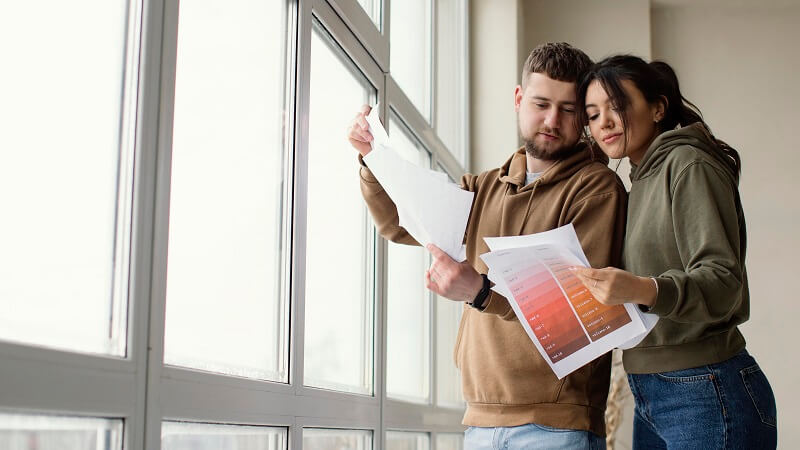Homeowners often underestimate the impact of windows on the aesthetic appeal and the comfort and energy efficiency of a property. When old, leaky windows begin to show their age, problems such as rising energy bills, uncomfortable drafts, and outside noise suddenly become hard to ignore. Beyond discomfort, there’s a proven link between outdated windows and increased energy usage. According to the U.S. Department of Energy, homes can lose up to 30% of their heating and cooling energy through inefficient windows. This translates directly into higher monthly costs, and for many, persistent frustration every season.
Fortunately, investing in modern replacement windows, especially those installed by a skilled Window Company, offers numerous advantages. With new windows, you’ll likely notice fewer drafts, a quieter living space, and consistent indoor temperatures—no matter the weather outside. Fresh windows also solve issues like stuck frames and water leaks, requiring far less maintenance in the long run. From an investment standpoint, they can add to your home’s resale value while boosting its visual appeal, since prospective buyers often prioritize energy efficiency and updated features.
Common Window Materials and Their Benefits
Selecting window frames is about much more than looks. The type of material you choose affects durability, maintenance, energy performance, and cost. Each window frame option has its unique personality and advantages:
- Wood:Wood windows have a warm, classic appearance that works beautifully in many traditional and upscale homes. Their natural insulating abilities help keep interiors cozy throughout the year. However, wood demands regular painting or sealing to avoid rot, swelling, and insect damage, meaning periodic upkeep is essential for their beauty and longevity.
- Vinyl:Vinyl windows offer reliable performance at a sensible price, making them an ever-popular option for replacement projects. They resist moisture, never need repainting, and come in various shapes and sizes, though color variations are somewhat limited compared to other materials. Their energy efficiency is excellent when coupled with properly insulated glass.
- Aluminum:If your project calls for slim frames, large glass panes, and a sleek, modern look, aluminum could be the answer. Its main advantages are strength and resistance to warping; however, because it’s a metal, it can transfer heat and cold unless equipped with a special insulating “thermal break.”
- Fiberglass:Fiberglass is a high-performance material that resists warping, shrinking, and swelling, even under extreme climate variations. These low-maintenance frames are tough, long-lasting, and mimic the look of wood when painted, but generally come at a higher initial cost.
Decision-making here should be based on your climate, the style of your home, available budget, and how much time you’re willing to dedicate to upkeep. In climates with high humidity or wide temperature swings, fiberglass or vinyl is a popular choice for longevity.
Prioritizing Energy Efficiency
Modern technology has made finding windows focused on energy performance easier than ever. Innovations such as double- or triple-pane glass, specialized gas fills like argon or krypton, and Low-E coatings give homeowners various tools to keep energy costs low. These features improve insulation, minimize condensation, and even block much of the sun’s ultraviolet rays, protecting furniture and flooring from fading.
When shopping for replacements, look for the ENERGY STAR label—a quick indicator of windows designed to meet your region’s energy standards. As the New York Times Wirecutter guide confirms, these upgrades can save over 12% on heating and cooling bills. In practice, the result is greater comfort: homes remain cooler in summer, warmer in winter, and free from annoying drafts. In some climates, the right window upgrades can save homeowners hundreds of dollars each year.
- Use multi-pane insulated glass for maximum energy performance.
- Seek advanced weatherstripping to block air and water intrusion.
- Consider tints or coatings to cut down on UV and glare.
Energy-efficient windows are a wise investment that ripples through your comfort, savings, and even environmental impact.
Balancing Style and Functionality
Function and aesthetics go hand in hand with windows; neither should come at the expense of the other. While some styles—like expansive picture windows—maximize light and create panoramic views, others—like double-hung or casement windows—allow better ventilation or opening functionality. Your lifestyle matters too: you need easy cleaning, and tilt-in sashes might be a priority. Custom grille patterns and special trims can make all the difference for those who cherish architectural accuracy, especially in older homes.
Increasingly, contemporary designs feature crisp, narrow frames in dark colors that offer dramatic contrast on a home’s exterior. On the other hand, traditional choices such as wood or soft white vinyl feel right at home in classic architecture. The vast array of styles and customization options empowers homeowners to make choices that reflect their tastes and daily needs, from privacy glass in bathrooms to sound-reducing units for busy streets.
Cost Considerations for Window Replacement
Cost is often a major factor in window replacement decisions. Basic vinyl windows generally cost between $300 and $700 to install, while custom wood or advanced fiberglass models may fetch $1,500 or more each. Costs can fluctuate based on glass type, frame material, window size, and labor complexity. Remember, what you invest up front can have major implications down the road. Energy savings, reduced maintenance, and peace of mind from a durable installation may justify a higher short-term outlay.
- Obtain quotes from at least three qualified installers to compare apples to apples.
- Ask each about their warranty coverage on products and artistry; more extended, comprehensive warranties offer greater long-term value.
- Check for available rebates or local energy credits related to ENERGY STAR upgrades, which can financially tip the scales in your favor.
Don’t let sticker shock disrupt your plans—balance quality, performance, and expected benefits.
Understanding the Window Installation Process
Window replacement is sophisticated, and professional installation is crucial for optimal results. It begins with meticulous measuring—precise dimensions ensure a perfect fit. Next comes the careful removal of old windows, protecting existing trim and structure. Installers must prep openings—repairing rot, improving waterproofing, and fixing insulation issues—before setting in the new units.
- Measurements are double-checked on-site for each unit.
- Old sashes, frames, and hardware are removed without damaging the surrounding surfaces.
- The installer preps the opening—sometimes adding flashing or waterproof barriers for extra protection.
- New windows are dry-fitted, caulked, and secured, with shims used to ensure they’re perfectly square and level.
- Gaps around the units are sealed, trims replaced, and the site is cleaned to finish up.
While straightforward for a seasoned pro, this process is more complex than it seems at first glance. When done right, it results in windows that operate smoothly, stay weather-tight, and preserve or boost your home’s appearance.
Avoiding Common Window Replacement Mistakes
Even homeowners with the best intentions can overlook key details during window upgrades. It’s too familiar to underestimate the importance of professional installation or choose windows based only on up-front price. That can lead to drafts, leaks, unexpected repairs, and even voided warranties. Measuring only the visible space after trim removal and skipping consultation with a pro may produce units that don’t fit right.
- Base window selection on long-term performance, durability, and service life, not just price.
- Communicate your climate needs; what works in one region may not suit another.
- Always double-check all measurements and consider wall depth, casing, and trim adjustments.
- Understand installation procedures and warranty fine print up front—ask questions if anything is unclear.
Taking these steps ensures your investment delivers comfort, efficiency, and value year after year.
Frequently Asked Questions
Do energy-efficient windows lower utility bills?
Absolutely. Quality, energy-efficient windows have been shown to reduce annual heating and cooling bills by as much as 12% or more, depending on your local climate and which windows are chosen. Savings can be even greater for those who upgrade from single-pane to modern double- or triple-pane units. Over the life of the windows, the reductions can offset much of the installation cost, while comfort and property value both increase.
How often will new windows need to be replaced?
With quality materials and proper care, today’s replacement windows are a long-term investment, typically lasting 20 to 40 years. Vinyl and fiberglass frames offer the best longevity and lowest maintenance requirements, while wood frames may need more frequent touch-ups but can still hold up for decades if properly maintained.
Are there rebates or incentives available?
Many local energy providers and municipalities offer attractive rebates for installing ENERGY STAR-rated windows. These programs help cut initial costs and support your aim of having a more energy-efficient and comfortable home. Always ask your Window Company about current special offers and check with local agencies for additional resources before starting your project.
Replacing your windows is a decision that will have a real impact on your comfort, energy bills, and home’s overall character. With thoughtful planning, clear priorities, and the expertise of a trusted professional, your new windows will provide enjoyment and benefits for generations.

